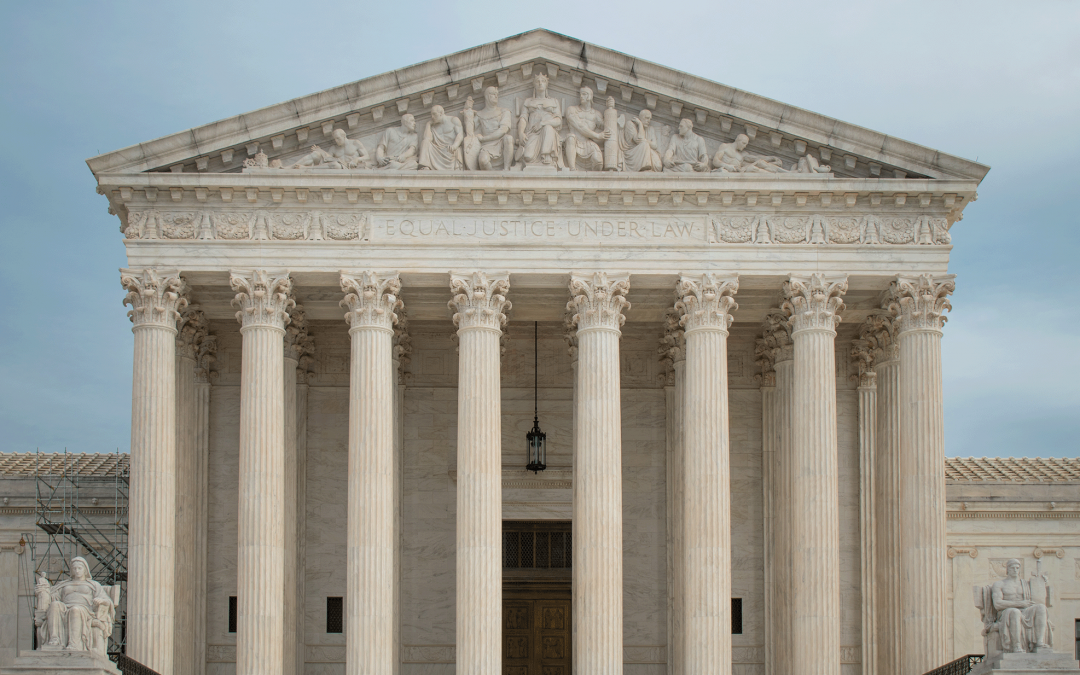WASHINGTON – In a second, lesser-known case, the Supreme Court this week heard oral arguments from individual borrowers about whether they have the legal standing to challenge the Department of Education’s student-debt relief plan. The court also considered whether the federal plan was properly authorized by statute and adopted in accordance with proper procedures.
This was the second of two cases brought against the Biden administration on an estimated $400 billion student-loan relief program to come before the court on Tuesday.
The case, Department of Education v. Brown, was originally filed by two student loan borrowers, Myra Brown and Alexander Taylor, who claim they were improperly denied the opportunity to provide feedback on the Department of Education’s student-loan forgiveness plan that the Biden administration announced in August 2022. Brown was not able to take advantage of the Department of Education’s student-debt relief plan because she had taken out private student loans not backed by the government, while Alexander Taylor qualified for $10,000 but not the full $20,000 available under the Biden program.
The judge in the federal court in the Northern District of Texas determined that Secretary of Education Miguel Cardona had exceeded his authority in creating this program and thus nullified the forgiveness program nationwide.
In one aspect of the case, however, he did rule for the government, saying that it was not required to go through a notice-and-comment process under the Health and Economic Recovery Omnibus Emergency Solution (HEROES) Act, a law from 2003 that allows the government to waive or modify loan provisions in response to a national emergency.
During the hearing, the justices were particularly interested in understanding the injury claimed by the respondents. They also asked many questions about the fairness of the student-debt relief plan, given the criteria for eligibility and the extent of aid available.
Solicitor General Elizabeth B. Prelogar, who represents the federal government’s interests, expressed concern that ruling for the original petitioners would set a precedent that could be used to block other agency actions without merit. Prelogar explained that petitioners, who do not stand to benefit from a ruling on Education Department’s action, should not be allowed to assert injury and interfere with the agency’s ability to regulate.
Michael Connolly, who represents the students who sued, argued that the Department of Education used the HEROES Act as an excuse not to adopt the program through negotiated rulemaking and notice-and-comment procedures.
According to Connolly, if the HEROES Act does not apply, then there is “no dispute that the program is procedurally improper.” He also noted that by choosing the HEROES Act route, the Department of Education had prevented stakeholders from having a say in how the program is administered.
Chief Justice John G. Roberts raised a question on fairness during the hearing. He presented a hypothetical scenario involving two high school students who cannot afford college: one takes out a loan, while the other starts a lawn care service and takes out a bank loan. Roberts questioned the government’s decision to cancel the loan of the college student, who is proportionally better off after college than the other student who took out a loan for a lawn care service. Justice Samuel A. Alito echoed Roberts’ fairness concerns and questioned the unequal treatment of individuals who did not receive comparable relief. He acknowledged the possibility that their interests were outweighed by those who benefitted, or that they were considered less deserving of support.
Responding to the justices’ concerns, Prelogar argued that Congress had already determined that during national emergencies that impact borrowers, the secretary of education is authorized to provide relief. She also stated that it was Congress’ responsibility to define the individuals who qualify for any relief program, and in this case, the secretary acted appropriately in granting relief to those who met the criteria.
In an exchange with Prelogar, Justice Sonia Sotomayor raised the issue of social inequality and fairness. She highlighted that while everyone suffered during the pandemic, different people received different benefits based on their eligibility under different relief programs. She argued that inherent unfairness exists in society because resources are limited, and every law has its boundaries.
“Every law has people who encompass it or people outside it. And that’s not an issue of fairness. It’s an issue of what the law protects or doesn’t,” she explained.
Connolly emphasized that the students’ procedural rights were violated, resulting in financial harm, and argued that the law mandates that the education secretary provides them with a chance to voice their concerns.
On the other hand, Prelogar maintained that if the Supreme Court decides to consider the merits of the case, it should reject the assertion that the peititioners’ procedural claim is invalid because of the clear statutory exemption by Congress, which specifically waived the secretary from following such procedures when issuing waivers and modifications under the HEROES Act.
The Supreme Court is expected to issue a ruling on the case before its term ends this summer.


